Community Planning Kete
A guide to developing Community Plans

2022
JUNE
PURPOSE OF THE KETE
This Kete is designed to assist communities through the community plan process.
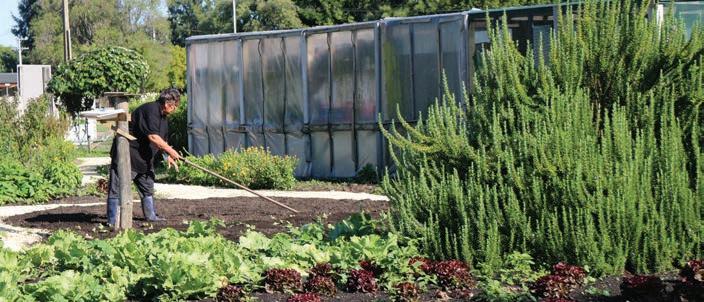
The kete provides a simple and flexible process for creating a community plan – from the initial stages of forming a community group, through to developing, implementing, monitoring and evaluating the plan.

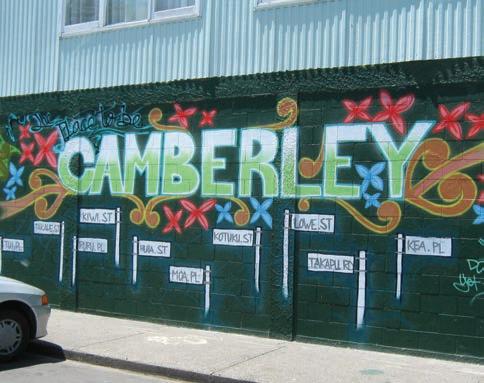


Contents Mihi 2 Introduction 3 Community Plans 4 Background 4 Strategic alignment 5 Development of a Community Plan 8 Community commitment 8 Community readiness 8 Council commitment 9 The plan process 10 - Getting started 10 - Information gathering 11 - Community consultation and engagement 11 - Ongoing governance and management of the Community Plan 14 - Updating Community Plans 14 An updated Community Plan 14 Appendices 17 Appendix 1 Current Community Plans 17 Appendix 2 Community Plans budget 20 Appendix 3 Example of submission update 23 Appendix 4 Example Community Plan newsletter 24 COMMUNITY PLANNING KETE -- HASTINGS DISTRICT COUNCIL // 1
Mihi
Heretaunga, the home of Ngāti Kahungunu gives us our cultural identity and cultural narratives captured through the following whakatauki and which are embedded in our strategic approach:
Heretaunga-ara-rau – myriad of pathways and opportunities to be seized
Heretaunga-haukū-nui – life enriching waters that sustain the region
Heretaunga-hārō-o-te-kāhu – the beauty of our landscape through the eyes of a hawk

Heretaunga-raorao-haumako – the fertile landscape which underpins our prosperity
Heretaunga-ringahora – renowned for warm hospitality and open arms
Heretaunga takoto noa – strong leadership over the challenges ahead
2 // HASTINGS DISTRICT COUNCIL -- COMMUNITY PLANNING KETE
Introduction
A Community Plan is the voice of a community. It obtains local people’s views on the place that they call home, celebrates the things that make their community special, highlights their goals and aspirations and creates a future vision for the community.
Led by the community, community plans are about community members coming together to develop a local plan to shape the development of their community into the future. Agreement is reached on objectives, actions, delivery responsibility and timeframes, all with the aim of improving the social, economic and environmental wellbeing of a local community.
Community-led plans have a vision, actions and an implementation plan. They are endorsed by Council, so can guide decision-making by the Council and other agencies.
The plan might be around infrastructure – eg: a playground or a community garden; community aspirations like supporting more youth in work or achieving better education; improving connectedness through people knowing and helping each other; planning for things like zoning or the rehabilitation of waterways; improving safety through better access to school entrances or protection for cyclists.
Community plans have come of age in Hastings, with measurable results that are encouraging further communities to embark on the process. One plan in one suburb in Camberley in 2004 grew to seven individual community plans by 2014.
There are currently 111 active community plans - some have just begun, and others are in their second or third version. Successes range across all the plans, from the community centre built in Camberley, to the revamped playground in Flaxmere, the revitalisation of the river corridor in Whakatū and the restoration of the monument in Maraekākaho.

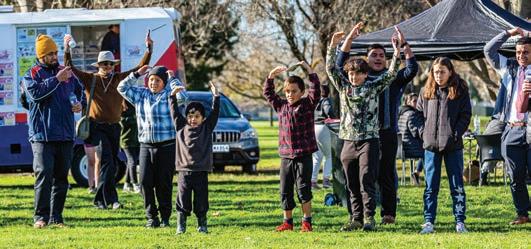
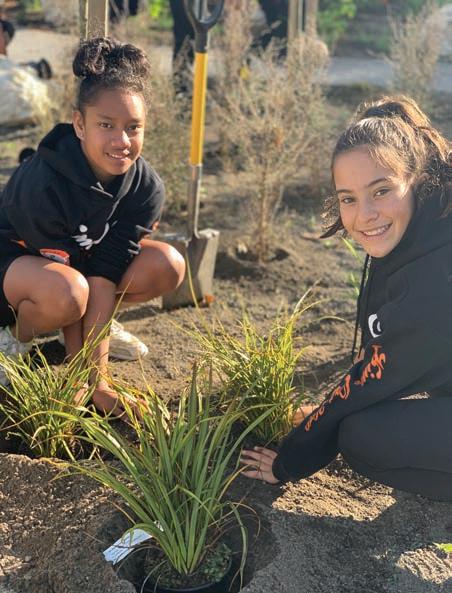
The inclusive and deliberate planning process outlined in this guide ensures that our community plans are clear, focussed, equitable, and feasible, and that all community plan stakeholders understand the process, purpose and outcomes. The plans provide an opportunity to empower individuals and agencies to support and improve the lives of each of our distinctive communities.
1 As at June 2022. See Appendix 1 for a complete list.
COMMUNITY PLANNING KETE -- HASTINGS DISTRICT COUNCIL // 3
All of our communities are different, with different issues, different aims and different strengths. The things they have in common are their vibrancy and their people’s passion for their neighbourhoods.
Community Plans
Background
Community plans are developed by community, for community.
Planning for the future has always been important for the Hastings District Council to ensure our district’s communities can grow well and retain what makes them special places.
Council has been on the path of community-led planning for 17 years, taking its first steps alongside the Camberley community in 2004.
The community plan concept came out of a desire to respond to the particular needs and special characteristics of communities. This is not always easy to do in a traditional council process which is typically focused on numbers in a community, its geography and Council perceptions of how it should work within the context of the wider district. That approach made it difficult to account for the different characteristics of different communities.
Council has since adopted a ‘place-based planning’ approach to guide its community development.


Place-based planning is about:
• working with community to identify what matters to them
• thinking about what needs to be done, and prioritising
• figuring out a community’s strengths and working out who can help achieve desired outcomes
• getting those who can help involved and deciding who can do what and when
• working together to achieve progress
• measuring and celebrating progress
• recognising environments with particular characteristics
Communities know what they need, and most are capable of identifying, planning and delivering their own projects with support from Council. Such projects can become a source of local identity and pride. The plans are an effective tool for capturing and prioritising these community aspirations, and provide a roadmap for how to get there.
Council’s role in community planning is a supportive one. Council walks alongside our communities to support them on their journey to achieve their desired community outcomes. This is through providing initial assistance to develop a plan, and then ongoing support to drive the implementation of the plan’s actions.
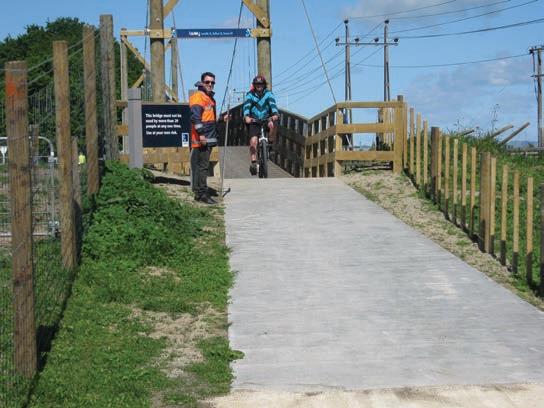
4 // HASTINGS DISTRICT COUNCIL -- COMMUNITY PLANNING KETE
Strategic alignment
MATARIKI REDS
The Matariki Regional Economic Development and Social Inclusion Strategy 2018 (REDS) specifically mentions the Flaxmere and Camberley community plans under Pou 1:

• Pou 1: Whānau Wellbeing “Creating a thriving society where everyone can participate and make a significant contribution to achieving greater economic growth and productivity for supporting whānau wellbeing”.
The following Hastings District Council Strategies, Plans, Frameworks and Guidelines are aligned to the development of Community Plans:
MANA WHENUA DEVELOPMENT: FUTURE CHOICE OF MĀORI
Te mahi tahi ki te mana whenua hei taunaki i te whanaketanga o te ao Māori. The development of the mana whenua world.
Hastings District Council and Māori
Eighty per cent of the Māori population reside in the urban areas, and are predominantly of Ngati Kahungunu descent. Local hapu also have significant relationships with other iwi descent groups: for example, Ngati Pahauwera, Ngāti Hineuru, Ngāti Tu, Ngāti Hinemanu and Te Whatu I Apiti, Te Hika a Papauma, and Rangitane. In reality hapu in Hastings district are within the larger catchment area of the Takitimu waka from Wairoa to Pencarrow as well as with wider links to the East Coast and the South Island. Hastings district boundaries encompass more than 100 hapu and 23 marae. The diverse hapu realities of Hastings district mean that we all work together through Council processes for opportunities to demonstrate values that are shared to uplift Maori in particular and benefit the community as a whole.

COMMUNITY PLANNING KETE -- HASTINGS DISTRICT COUNCIL // 5
HERETAUNGA RINGAHORA

Heretaunga Ringahora supports Council’s Heretaunga Ararau Te Reo Māori Policy and Action Plan.
The purpose of the document, when engaging with Māori, iwi, hapū and whānau, is to assist with:
• determining what the kaupapa is
• identifying who to engage with
• supporting how to engage through the development of an effective engagement strategy.
GREAT COMMUNITIES STRATEGIC OVERVIEW
Council’s vision for the future is ‘Fertile land, prosperous people’ – Heretaunga whenua houkura, Heretaunga hapori ora. It represents our fundamentals, the fertile land and life giving waters which support it and the people of this place fulfilling their aspirations and prospering together.
To fulfil this vision, Council has developed four overriding community outcomes. The Great Communities Strategic Overview has been developed to support Community Outcomes 3 “Safe and Inclusive Place” and 4 “Vibrant place to live, play and visit”, and shows how the strategic outcomes will be achieved through various strategies and action plans.

MULTICULTURAL STRATEGY
Hastings District Council had a vision to be an inclusive, welcoming community where everyone belongs. The Multicultural Strategy was developed with a number of community organisations.
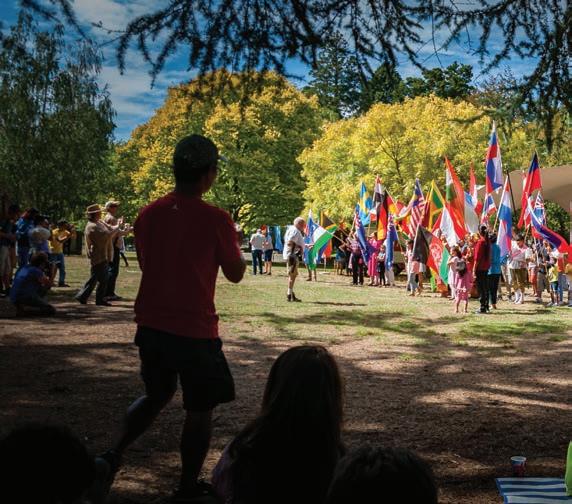
The goals of the strategy are:
• Multiculturalism and diversity is celebrated in Hastings district
• Hastings district is a welcoming, inclusive and safe place for all
• People of all cultures have equitable access to council services and resources
• All residents feel empowered to participate in council decision-making
• Council is a role model in terms of cultural diversity
6 // HASTINGS DISTRICT COUNCIL -- COMMUNITY PLANNING KETE
YOUTH STRATEGY


This strategy outlines how the Hastings District Council is investing in the positive development of its young people aged 12-24 years over the next five years. Through its goals and actions, Council is striving to enhance young people’s mana so they feel empowered to reach their full potential. The strategy provides a framework to better engage young people in the future and strengthen Council services and programmes to better meet the needs of all young people across the Hastings district.
The strategy is a joint commitment of the Hastings District Council and the Hastings Youth Council. Young people’s ideas, thoughts and experiences have driven the development of the strategy, its priorities and the actions.
SAFER HASTINGS COALITION
Safer Hastings is a coalition made up of people from a diverse group of government and community agencies and a wide network of supporting organisations all working together in a co-ordinated and collaborative way to improve community safety. Council is the lead agency for the coalition. The coalition has a mission of “working together to connect agencies and communities to build resilience and reduce injury and harm”.
COMMUNITY WELLBEING ACTION PLAN
A key principle of ‘Mā te huruhuru, ka rere te manu’ our COVID-19 Community Wellbeing Action Plan, is that community is at the core of our recovery. Reviewing current community plans has provided Council with a way to understand COVID-19 impacts on our communities. Going forward Council will support our communities to redevelop their plans to include specific initiatives to aid recovery from COVID-19.

COMMUNITY PLANNING KETE -- HASTINGS DISTRICT COUNCIL // 7
Development of a Community Plan
A Community Plan is developed by community with support from Council. This community-led approach is about local people in the community taking the lead to develop their Community Plan by mobilising their local resources and building on their strengths to set a vision and goals for the future, and developing a plan for how to get there.
Community commitment
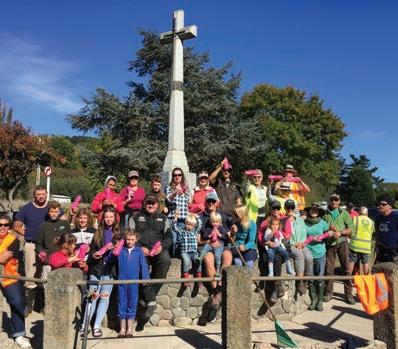
Often the process starts with a few dedicated people who draw in the rest of the community. The experience has been that once people see the vision they get involved. Communities start with the following process:
• Form a Community Plan committee which is inclusive of the whole community

• Agree on the social, cultural, economic, environmental, historical and demographic elements of the community
• Identify the hopes and goals of residents
• Consult with the wider community to ensure that people are supportive of the plan
• Work out how the goals might be achieved
• Work out an action plan to achieve the desired outcome
• Present their community plan to Council
• Drive and support the implementation of their Community Plan.
Community readiness
Some communities may be more ready than others to address issues in their community. The following questions help determine whether a community is ready to develop and support a Community Plan.
• Have key stakeholders, groups and community leaders been identified?
• Have these groups and leaders expressed their support for the project?
• Are there other sections of the community who need to be engaged in an appropriate way to ensure that their voice is heard?
• Is the community prepared for a plan that may take one year to complete followed by an implementation phase of three to four years?
• Is there a support team in place capable of undertaking all the tasks required for the planning process?
• Are there NGOs and Government Agencies that should be invited to various stages of the process?
8 // HASTINGS DISTRICT COUNCIL -- COMMUNITY PLANNING KETE
Council commitment

The Community Development Manager has the ultimate responsibility for the monitoring of the plans and reporting bi-monthly on progress to the Great Communities sub-committee.
Council also identifies an appropriate councillor to support the community and to be the champion for the community at Council meetings.
Each community that wants to develop a Community Plan works with a Council Community Connector from the Community Development team.
The Community Connector supports the development and oversees the implementation of the community plan alongside the community. This includes activities such as:
• Communicating and engaging with the community

• Facilitating and organising workshops and meetings

• Setting timeframes and collating information.
The Community Connector reports regularly to the Community Development Manager on the progress of the plan and raises any concerns or issues that require attention.

“From a community planning and development perspective the focus, guidance and help given by our HDC community liaison person is of enormous value. Not only does this help get a realistic and achievable five-year plan on paper, and therefore something everyone can understand and work to, but it cements the important working relationships between the community and our district council.”
COMMUNITY PLANNING KETE -- HASTINGS DISTRICT COUNCIL // 9
Jonathan Stockley Chair Focus Maraekākaho
The plan process

Getting Started
A member of a community or group expresses interest in having a Community Plan and asks Council for support. This request is usually formalised via a submission to Council’s Annual Plan or Long Term Plan submission process. Council officers can support with drafting this submission.

If Council agrees to the development of the Community Plan, a Community Connector is assigned as a relationship manager to work alongside the community. A councillor is also identified to support the community.
Council officers identify an appropriate external facilitator to lead the engagement of the community plan, working alongside the Community Connector. This external appointment ensures transparency throughout the plan process. A community may also like to lead the engagement of their community plan. The Community Connector will walk alongside the community and provide appropriate support. This usually is the case with communities who have already had two to three community plans.
1STEP 2STEP 3STEP Example of an Annual Plan submission.
10 // HASTINGS DISTRICT COUNCIL -- COMMUNITY PLANNING KETE
Information gathering 4STEP 5STEP
The Community Connector brings together the facilitator and a Council working group with representatives from different departments (ie: parks, roading) to identify and discuss any planned works or engagement with that community.
The Community Connector brings together the facilitator and key external partners working in the identified community to discuss what they are currently delivering or planning in that community.
Community consultation and engagement 6STEP 7STEP
The Community Connector and community identify potential community champions (school principals, church leaders, passionate individuals etc) and brings them together with the facilitator to form the Community Plan working group. They discuss the appropriate community engagement method and how they will inform/bring community on the journey with them.
FROM THE COMMUNITY
Tena Koutou Katoa, Ko Kiri Goodspeed taku ingoa.
A Community Plan is developed through community engagement and consultation. This is led by the Community Plan working group and facilitated by the independent facilitator supported by the Community Connector. Community engagement could include; surveys, hui, meetings, workshops, attendance at events, facebook etc. Council can support with engagement with external stakeholders (eg: Government and non-governement agencies) to include them in the planning process.
I have been living in Te Pōhue, and now currently in Te Haroto, for 7 years; and began a journey over 3 years ago to have a Community Plan written for Te Pōhue and the wider district. The focus for me at the time of submitting the application was recognition of our community as the gateway for Hawke’s Bay and creating aspirations of beautification. On reflection, the main driver truly, was understanding that the mechanism of a Community Plan allowed our community a voice and an opportunity to grow our relationship with the Hastings District Council; turning around a general perception that the relationship was tenuous and that our rates were not coming back for the benefit of our community. The process of drafting the community plan was incredible; attendance began in numbers around 20 and soon gained momentum with each planning session, with around 60 to 70 people across the community attending consistently in the

end. The inclusion of Te Pōhue residents, Te Pōhue School, Community Club and Committee members; representatives from Ngati Hineuru, Maungaharuru-Tangitū, NZTA, NZ Police, Rayonier Matariki Forests and Meridian Wind Farm meant that many and diverse stakeholders in our community came together, bringing to the table different outlooks perhaps, yet a desire to grow our community. Due to this I have complete confidence that our entire community and its many voices have been raised, have been heard, and I watch with anticipation the journey over the next 5 years as our aspirations unfold.
Ehara taku
he
takitini
Nga mihi mahana ki
Kiri Goodspeed
a katoa;
toa i te toa takitahi. Engari taku toa,
toa
– Success is not the work of an individual, but the work of many
4 // HASTINGS DISTRICT COUNCIL TE PŌHUE COMMUNITY PLAN 2021-2025
COMMUNITY PLANNING KETE -- HASTINGS DISTRICT COUNCIL // 11
Example of community engagement and consultation.
8STEP 11STEP
9STEP
When the community is happy with the content of it’s Community Plan, the Council working group and key partners are brought back together separately.
Both groups are shown the goals, aspirations and outcomes from the community and are asked to look at their work programmes and budgets to see when these outcomes can be implemented. This includes utilising the Community Plan budget. See Appendix 2 for details.
It is important to note that some of the community outcomes may not sit within Council and will need to be negotiated with the appropriate agency.
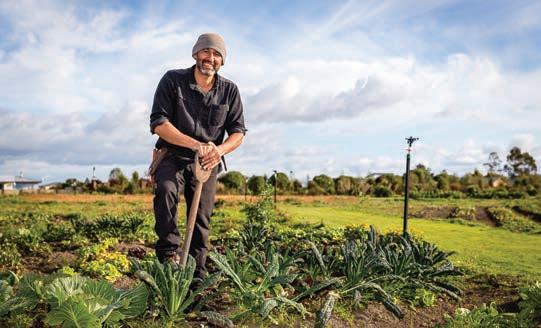
An action plan is developed to support the Community Plan timeframes including budget, outcomes and what year it will be delivered.
If the outcomes are not able to be achieved by Council or key partners a meeting is held with the Community Plan working group to explain why.
12STEP 13STEP
The Community Connector prepares a report to the Greater Communities sub-committee. The sub-committee considers the report and if it approves the report forwards it to the Strategy & Development committee for endorsement.
If the Community Plan is from a rural community, the plan must go through the Rural Community Board before proceeding.
14STEP 10STEP
The Community Connector arranges for the Strategy & Development meeting to be held in the community (where possible) and works with the community champions to prepare them for their presentation to the Committee.
A draft Community Plan is designed and developed by Council’s marketing & communications team. The plan will reflect the local community. The draft will then be checked by the community to ensure it is reflective of THEM and the content is accurate.
The Community Plan may include:
1. Cover and back page
2. Contents
3. Message from the mayor
4. Introduction
5. History of the community ( where possible pre-1840)
6. Community profile (including maps and graphics)
7. Community demographics
8. A section on partnerships
9. Timeframes showing when actions will be delivered
10. Budget required and approved
The community champions group present their plan to the Strategy & Development Committee for endorsement. The plan is endorsed and implementation commences.
12 // HASTINGS DISTRICT COUNCIL -- COMMUNITY PLANNING KETE
Example of a Community Plan launch.
From establishing a wellbeing hub, to providing more education and employment services, improving road and community safety, creating a community garden and developing Kirkpatrick Park, the plan captures a broad range of potential actions to help this community thrive.
Long-time Camberley resident Janelle Paku-Ngametua was involved in creating the Camberley Community Plan 2016-2020, and said a lot had been achieved as a result.
Community gathers to launch Camberley Community Plan
This included Sport Hawke’s Bay’s programmes, the driver licensing caravan that was parked up at the community centre three days a week, which had helped numerous people gain their licence, including herself and her son.
There had also been sporting tournaments held at the park, a basketball academy created, a new splash pad built, as well as a basketball court and barbecue area.
Most recently a new mural had been painted on the old changing rooms at Kirkpatrick Park, which had uplifted and brightened up the park, she said.
“The Camberley community loves these additions and the park is always busy with people of all ages.”
Hastings councillor and Great Communities subcommittee chair Eileen Lawson was also involved in the creation of the 2020-2025 plan and said a lot of work and consultation had gone into it.
“I want to thank the Camberley community for their passion and commitment to this plan – it’s brought together their goals and aspirations and celebrates all that’s fantastic about Camberley.
5 May 2021
Back to News
Building a connected community that has pride in itself, and is supported to thrive is the underlying vision for a new community plan for Camberley that was endorsed by Hastings District Council yesterday.
Rather than being held at the council chambers, the strategy and policy committee decided to hold its meeting at the Camberley Community Centre, inviting the community to attend and help launch the Camberley Community Plan 2020-2025.
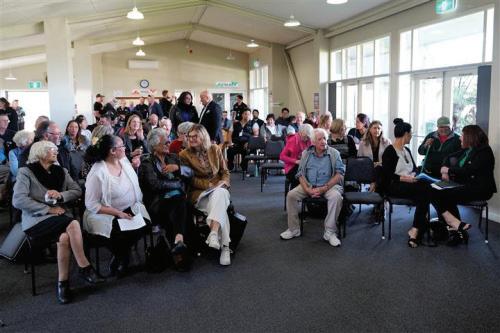
The plan is the result of more than 12 months of meetings, consultation and planning with the community and other stakeholders, including government agencies and service providers, and it sets out the community’s aspirations and how these will be realised.
One of those involved was Sally Maoate who told those gathered that she had lived in Camberley for most of her life, starting school at Frimley School and then moving to Camberley School when it was built in the 1960s.
“This plan is the culmination of hours of work and effort by the council team and others, and of course those from the community who have helped by bringing the ideas together – this is our plan for our community,” she said.
https://www.hastingsdc.govt.nz/our-council/news/article/2021/community-gathers-to-launch-camberley-community-plan 1/2
https://www.hastingsdc.govt.nz/our-council/news/article/2021/community-gathers-to-launch-camberley-community-plan

6/20/22, 11:05 AM Community
to launch Camberley Community Plan | News Hastings District Council
gathers
6/20/22, 11:05 AM
Community gathers to launch Camberley Community Plan News | Hastings District Council
2/2
COMMUNITY PLANNING KETE -- HASTINGS DISTRICT COUNCIL // 13
Ongoing governance and management of the Community Plan
STEP
The Community Connector provides ongoing advice and back-up support to the Community Plan Group to help implement actions.
Example of an updated Community Plan
Kia ora, Talofa lava, malo e lelei, kia orana, bula vinaka, mauri, fakatalofa, halo olketa, namaste, kumusta, nī hāo, hello
We Love Flaxmere. Flaxmere Connect. My Flaxmere. It’s Flaxmere’s Time.
STEP 17STEP
Regular communication and hui will occur to monitor progress and ensure outcomes are achieved as per the plan. The Community Plan is reviewed by the end date by the community and the Community Connector.
The review is presented to the Greater Communities sub-committee.
Updating Community Plans
A Community Plan is ongoing.
Over time, as a community changes, so too will its goals and aspirations.
If the community decides to update their Community Plan they will be asked if they would like to develop a new Community Plan or an action plan. See Appendix 3 for an example of a submission to review and update an existing Community Plan.
The difference being an action plan focuses on implementing tangible annual outcomes.
These are key phrases that have driven everything that’s happened in Flaxmere over the past 10+ years and will continue to motivate growth and potential for our wonderful community for the next 10+ years as we implement this new community plan. It truly is Flaxmere’s time to achieve the vision that those who first settled in Flaxmere and those who developed the first Community Plan saw for our wonderful suburb. The Flaxmere Planning Committee whole heartedly support this vision and will continue to advocate for initiatives that inspire community pride, individual and family wellbeing, care for our vulnerable populations, nurturing for our younger generations, and promotes a positive wholesome outlook on life. Our time is now. Let’s all get in behind this plan to achieve what we know this suburb can become. Kia kaha (be strong), kia maia (be brave), kia manawanui (be patient). We can do this together.
Ngā mihi
Traci Tuimaseve Chair of the Flaxmere Planning Committee
15
16
14 // HASTINGS DISTRICT COUNCIL -- COMMUNITY PLANNING KETE
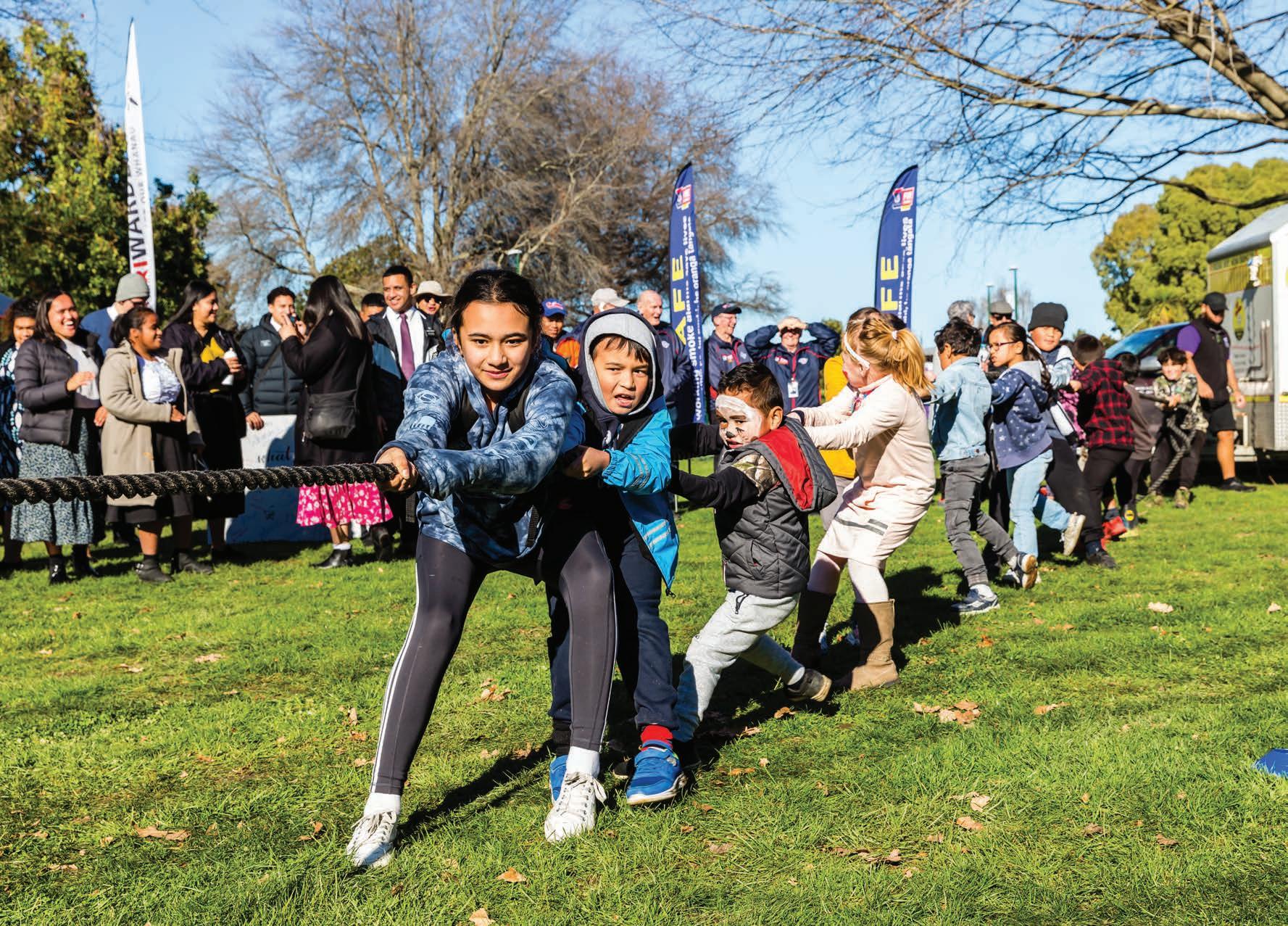
COMMUNITY PLANNING KETE -- HASTINGS DISTRICT COUNCIL // 15

16 // HASTINGS DISTRICT COUNCIL -- COMMUNITY PLANNING KETE
Appendix 1
Current Community Plans as at June 2022
COMMUNITY PLAN OFFICER RESPONSIBLE COUNCILLOR STATUS
Bridge Pa Dr James Graham Sophie Siers
Camberley Paddy Steffert Eileen Lawson
In draft.
Under Implementation and due for completion in 2025.
Cape Coast Debbie Northe Alwyn Corban/Ann Redstone Under review with action plan of outstanding items being compiled.
Flaxmere Robyn Smith Peleti Oli/Henare O’Keefe
New plan in draft form incorporating Flaxmere West.
Mahora Robyn Smith Wendy Schollum/Geraldine Travers Community consultation underway.
Maraekākaho Debbie Northe Sophie Siers
Due for completion by the end 2022. New plan to be developed in the second half of 2022.
Ōmāhu Robyn Smith/Charlie Ropitini Tania Kerr Community engagement commenced.
Raureka Robyn Smith Eileen Lawson Council implementing community actions.
Te Pōhue JR Roberts Tania Kerr Plan for approval June 2022.
Waipatu Paddy Steffert Ann Redstone/Alwyn Corban One outstanding action.
Whakatū Paddy Steffert Ann Redstone/Alwyn Corban One outstanding action.
Completed Community Plans as at June 2022
COMMUNITY PLAN OFFICER RESPONSIBLE COUNCILLOR STATUS
Anderson Park Robyn Smith
Clive Dennise Elers Ann Redstone/Alwyn Corban
Flaxmere West Robyn Smith Peleti Oli/Henare O’Keefe
New plan to be developed as part of the wider Flaxmere Community Plan. Outstanding actions being implemented.
Mayfair Paddy Steffert Wendy Schollum Completed with action plan being developed.
Waimārama Dennise Elers Sophie Siers
Completed. Annual action plan under implementation.
COMMUNITY PLANNING KETE -- HASTINGS DISTRICT COUNCIL // 17
H GITIKEI DIST R I C T WAIROADISTRICT HERETAUNGA TAUPODISTRICTCommunity Plans 9 13 18 // HASTINGS DISTRICT COUNCIL -- COMMUNITY PLANNING KETE
STATUS COMPLETED IN DRAFT UNDER DEVELOPMENT UNDER IMPLEMENTATION UNDER REVIEW Anderson Park Bridge Pa Camberley Cape Coast Clive Flaxmere Flaxmere West Mahora Maraekākaho Mayfair Ōmāhu Raureka Te Pōhue Waimārama Waipatu Whakatū 1 2 3 4 5 6 7 8 9 10 11 12 13 14 15 16 1 2 3 4 5 6 7 8 11 10 12 14 15 16 COMMUNITY PLANNING KETE -- HASTINGS DISTRICT COUNCIL // 19
Community Plans budget
Allocation Priorities
Most actions in Community Plans are considered for within existing Council budgets. The Community Development team has a modest internal operational budget to assist the community to meet some of their goals and aspirations within their plan. This framework and priorities have been developed to assist staff in their decision making in the allocation of the budget to support the Community Plans. Community groups can also apply for other contestable funding, local business sponsorship or community fundraising to support their community actions. This framework has been developed to:
• Ensure equal opportunity to access funding across the different community plans

• Assist staff in their decision making
TRANSPARENCY
The allocation of funds to the Community Plans will operate transparently in all respects and at all stages of the process, while protecting confidentiality.
EQUITY
All communities will have an equal opportunity to be considered for budget allocation, and Council staff will ensure applicants are treated fairly, regardless of their size, location (within the Hastings District Council boundary) or circumstances.
ACCOUNTABILITY
Staff and community will work together to deliver good value to residents, by supporting initiatives that are cost effective and which can produce clear benefits for our communities.
RESPECT
Council shares many interests, values and goals with the community, but also recognises that each community has its own mission, and is accountable to its own community members.
COMMUNITY-LED
Where possible Council should support projects that are conceived and delivered by the community, for the community.
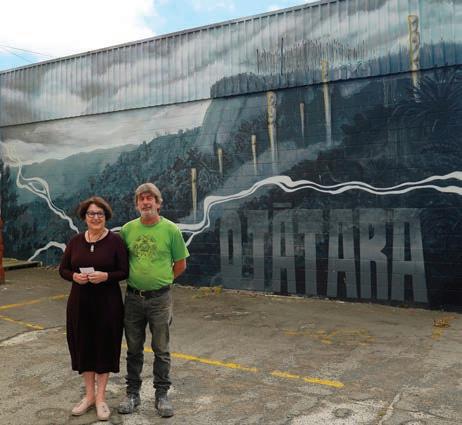
PROPORTIONALITY
Council will strive to balance its statutory responsibility to ensure the lawful and prudent expenditure of public funds.
2 20 // HASTINGS DISTRICT COUNCIL -- COMMUNITY PLANNING KETE
Appendix
HIGH PRIORITIES:
• Projects must be clearly connected to an action in a Council endorsed Community Plan.
• The project must meet one of the Council objectives:
- Uplifting our communities’ wellbeing by providing access to help and advice
- Fostering a sense of pride within our district and across our diverse communities
- Promoting happy, healthy and active communities
• The action must be within the relevant timeline
• Projects that have a sustainable ongoing clear budget allocation
• Projects that also benefit to the wider community
• Projects that are community led and have appropriate Council and Council Officer support.
THE FOLLOWING ACTIVITIES WILL NOT BE FUNDED:
• Debt servicing or repayment
• Legal expenses
• Activities that promote religious ministry or political purposes and causes
• Medical expenses
• Public services that are the responsibility of central government (e.g core education, primary healthcare)
LOWER PRIORITIES:
• Items that are planned and budgeted for a future date
• Ongoing salaries and administration costs
• Fundraising events or activities, especially where the beneficiary is a third party (e.g. charity events, sponsored walks), unless we determine the event has a wider community benefit beyond its primary purpose as a fundraiser
• National organisations
• Health-based organisations that could be funded by the HBDHB
• Education-based organisations that could be funded by the MOE
• Groups whose services are not located in the district.
• Large physical works – e.g. improvement to community buildings – that require consents or permits, prior to the necessary consents or permits being obtained (grants may be awarded in principle but funds will not be released until all conditions are satisfied)
• Purchase of alcohol
• Retrospective costs (where the activity has already taken place), unless this is necessary as a condition of the grant or Council is satisfied there are other mitigating circumstances
• Groups whose services are delivered outside the district or community.
COMMUNITY
KETE --
// 21
PLANNING
HASTINGS DISTRICT COUNCIL
Projects focused on outcomes will be discussed as a group every three months by the Community Connectors and the Community Development Manager and approved in accordance with the above priorities. The Community Development Manager will review and approve each project against the priorities and available budget. Other things that will be taken into account when approving and prioritising these projects are:
• Ability to deliver against set timeframes
• Strategic alignment
• Community priority
• Other recent Council investment

• Equity in terms of communities actions for each plan,
The Council’s Community Grants advisor can assist each Community Plan group on both Council and external contestable funding opportunities,
Hastings District Council manages a range of grants and funding opportunities which are available to community groups and, in some cases, individuals, all with specific criteria designed to enhance the lives of residents through events, programmes, services, and facility improvements.
All of the grants are contestable so the success of the application will depend on how well the project fits with individual criteria, the priority of the type of project compared with the others, and the grants money available for allocation.
Hastings District Council has many different sources of funding to empower organisations to meet their shared goals including, but not limited to:
• Community Grants
• Creative Communities funding
• Waste Minimisation Fund
• Event support Funding
• Marae Development Fund
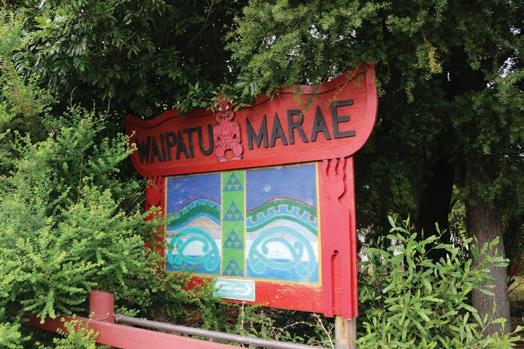
• Rural Halls Maintenance Fund.
For larger projects it is unlikely Council will provide the total amount of funding required so groups may need to show how they can attract funding from other agencies and charities outside of Council. Other local Funding organisations include:
Eastern & Central Community Trust www.ecct.org.nz
Sport Hawke’s Bay www.sporthb.net.nz
Infinity foundation
www.infinityfoundation.co.nz
Trust House www.trusthouse.co.nz
Hawke’s Bay Foundation
www.hawkesbayfoundation.org.nz
Pub Charity
www.pubcharitylimited.org.nz
Lion foundation www.lionfoundation.org.nz
North & South Trust www.nstl.co.nz
Department of Internal Affairs
www.communitymatters.govt.nz
NZCT
www.nzct.org.nz
First Light
www.firstlightfoundation.co.nz
Grassroots Trust
www.grassrootstrust.co.nz
22 // HASTINGS DISTRICT COUNCIL -- COMMUNITY PLANNING KETE
Appendix 3
Example of a submission to review and update an existing Community Plan.


COMMUNITY PLANNING KETE -- HASTINGS DISTRICT COUNCIL // 23
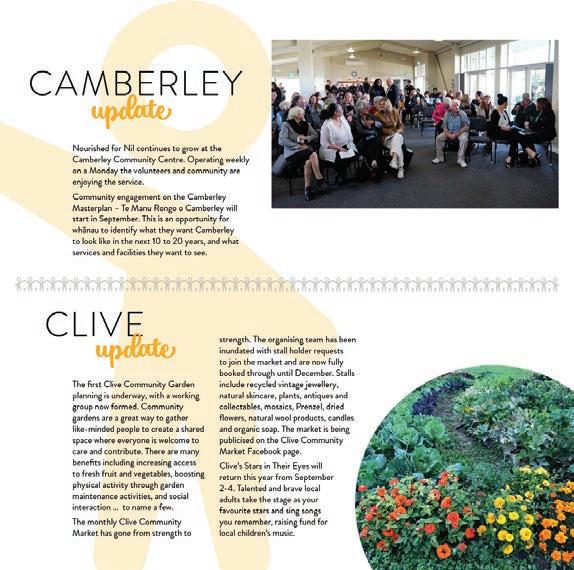

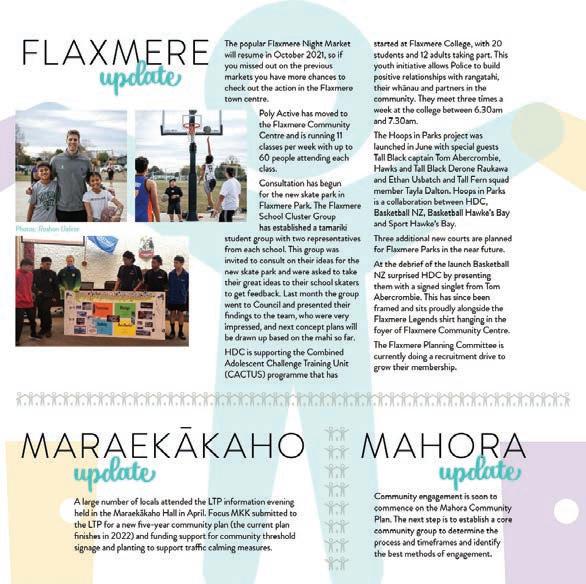
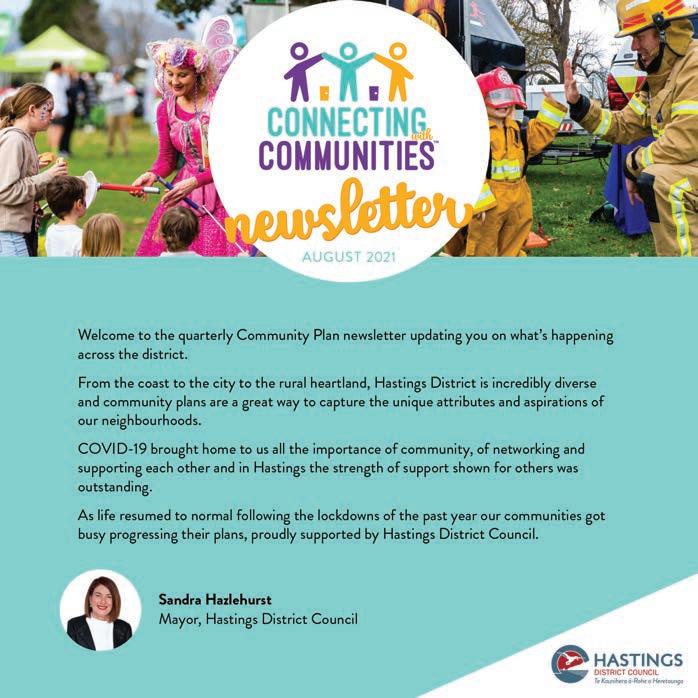
Appendix 4
24 // HASTINGS DISTRICT COUNCIL -- COMMUNITY PLANNING KETE
Example of Councils Community Plan Newsletter.
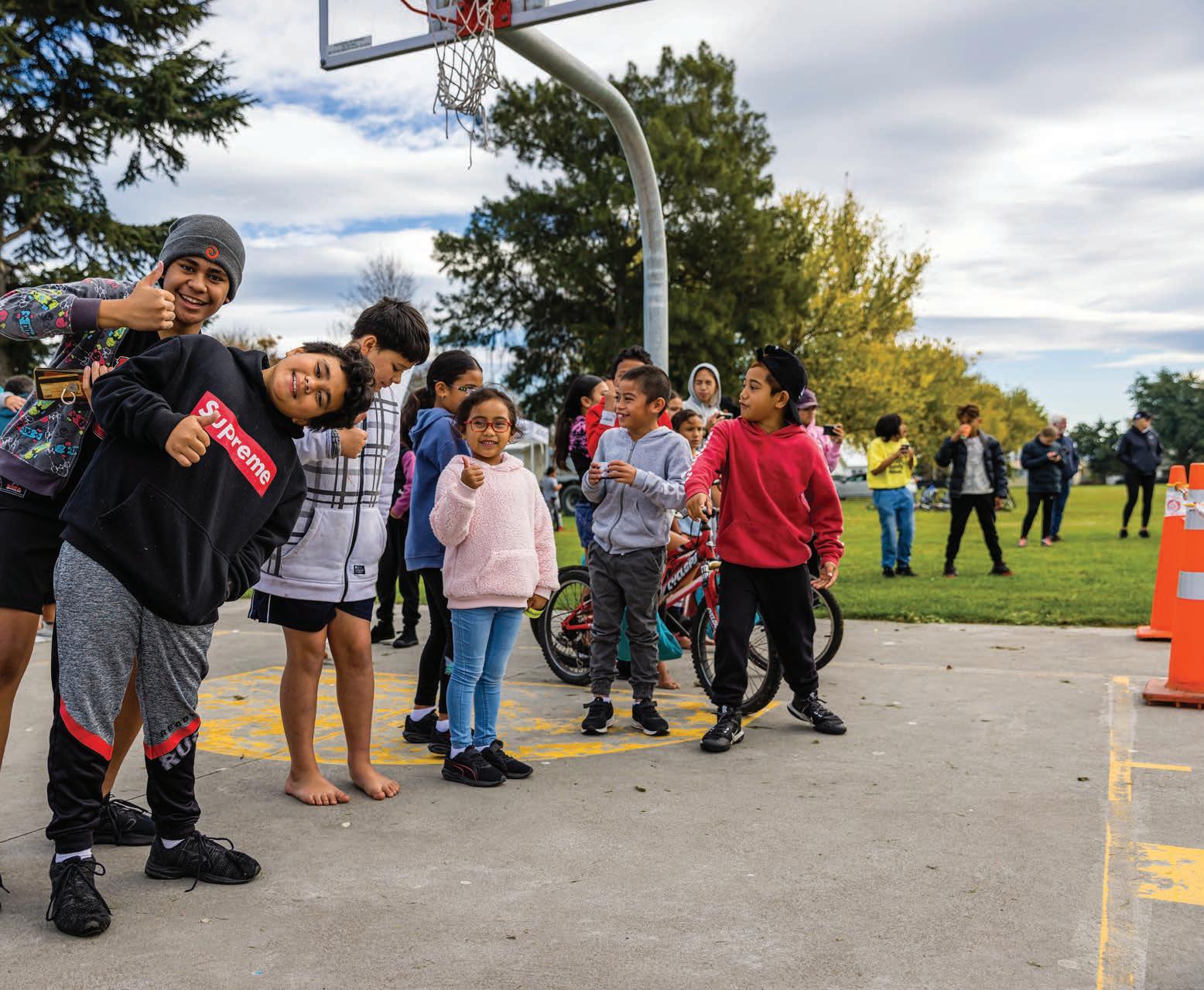

COMMUNITY PLANNING KETE -- HASTINGS DISTRICT COUNCIL // 25

HASTINGS DISTRICT COUNCIL 207 Lyndon Road East, Hastings 4122 Private Bag 9002, Hastings 4156 www.hastingsdc.govt.nz TE KAUNIHERA Ā-ROHE O HERETAUNGA 5600622
















































